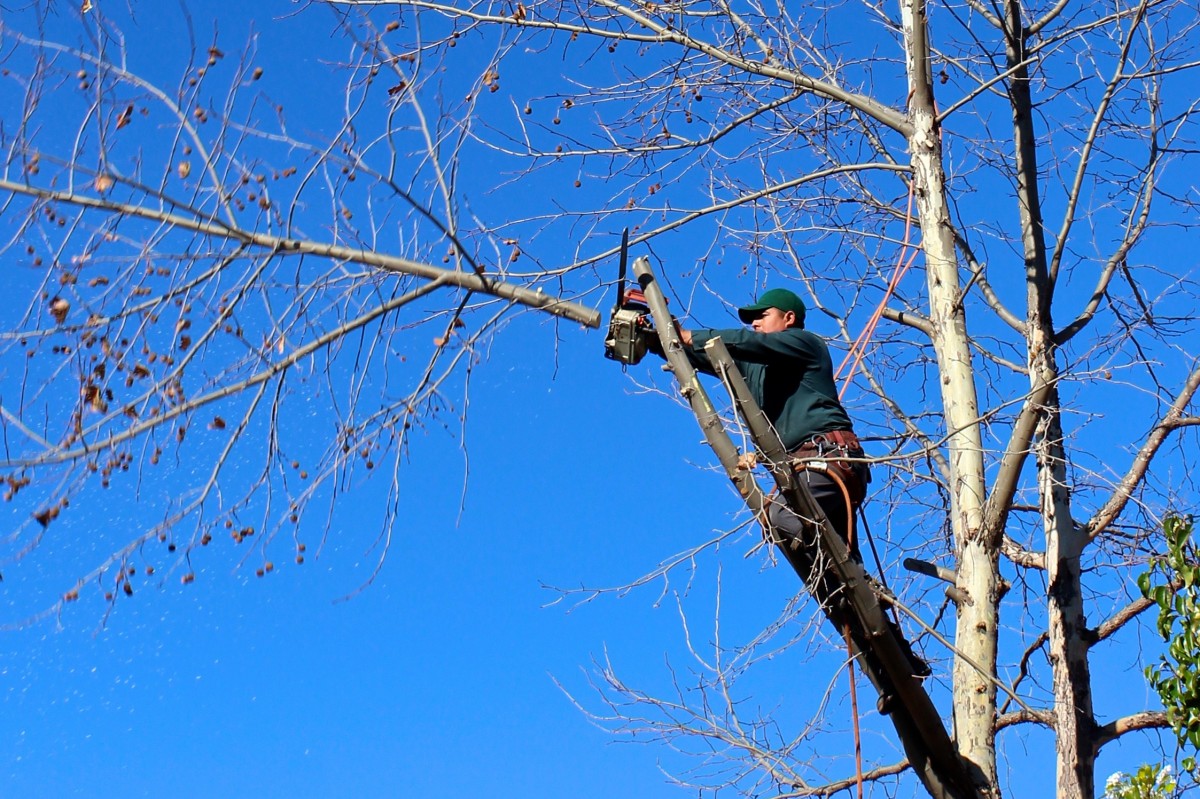Summary
– Principles of forest tree pruning
– First step in pruning forest trees: training pruning
– Pruning schedule for forest trees: progressive and moderate pruning
– Pruning of forest trees and pruning
The pruning of forest trees generally requires the intervention of a pruning company. For the safety of the tree pruner, you must adapt the pruning equipment. Moreover, the pruning of deciduous trees and coniferous trees meets specific requirements and a specific schedule.
Principles of forest tree pruning
The forest is used to produce:
– lumber (boards) in the best of cases;
– firewood;
– pulpwood (chipboard, wood chips, etc.).
Pruning, which is a costly operation, only occurs in the case of stands intended to produce timber. It removes the branches on the trunk to obtain quality wood with few knots.
Firewood is most often obtained by coppicing the forest. The trees are then re-cut (pruned at the base) at regular intervals and produce offshoots harvested every 10 to 40 years.
The first stage of forest tree pruning: training pruning
Before arriving at the pruning phase, forest trees must undergo a classic formation pruning, which consists of privileging the arrow if it is competed by vertical branches or would be damaged. A passage in the stand is necessary :
– every year, somewhat in winter, in the case of deciduous trees, to identify the axes;
– all year round for coniferous trees (outside the period of sap rise or fall).
Pruning of forest trees starts as soon as they reach 12 to 15 cm in diameter at 1.30 m from the ground. The trees are then between 6 and 10 m high, depending on the site and the density of the plantation.
Note: The leader is regularly replaced by a competing branch in some species, such as chestnut. Thanks to the superposition of “modules,” the trunk is built up and acquires perfect straightness over time. It is therefore useless to rush to remove the top. In oaks, when a fork appears, wait 2 years before intervening.
Pruning should be linked to thinning whenever possible because it is only done on trees that you are sure to keep in the long term. Thinning consists of removing a certain number of trees per hectare to allow the others, the best formed, to develop. The pruning intervenes on the 200 to 300 stems per hectare that we keep.
Pruning forest trees: progressive and moderate pruning

There are several variations regarding the pruning schedule. In all cases, pruning should be done gradually and in moderation. Never prune more than one-third, exceptionally half, of the tree’s total height. Prune in one or two stages to not disturb the tree because these branches, even if they are in a senescence phase (aging), participate in photosynthesis. Excessive pruning causes the appearance of gourmands (vigorously growing branches)!
A first pruning is sometimes carried out at the height of 2 m on all trees except those removed during the first thinning to facilitate future work. This represents an additional cost that can also reduce the risk of fire.
Pruning of forest trees and trimming
After a late or too severe pruning, suckers can appear on the trunk. It is then necessary to proceed with pruning, i.e., remove these vigorous branches. If the suckers are not pruned, they slow down the sap flow to the crown by forming branches and knots on the bole and scions. Winter pruning encourages the suckers more than green pruning (during the growing season).
The suckers or shoots (regrowth after a cut) have a rather superficial anchorage on the trunk. They can be distinguished from branches by their young bark and their footing at the base (no branch neck). They should be pruned parallel to the axis of the trunk without damaging the bark – you can sometimes remove them by pulling on them.



